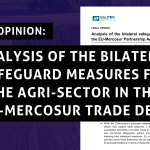Dear Member of the European Parliament,
Developing a European renewable hydrogen network is vital to our energy transition. The EU must secure world leadership in this key technology, build energy security, and decarbonise the hard-to-electrify sectors in record time via this solution.
Due to its chemical and economic characteristics, renewable hydrogen will not replace gas one for one, and therefore cannot be governed in the same way.
Whereas most of the current uses of gas (power and heat generation) will be replaced with renewable electrification, renewable hydrogen will mostly replace fossil fuels and fossil-based hydrogen in heavy industry and long-distance aviation and shipping. In addition, this energy carrier will be produced by numerous new actors entering the market and will be transported mostly within regional areas, as clustering production and consumption sites will allow to minimise infrastructure needs.
The development of hydrogen infrastructure must therefore be tailored to meet the needs of hard-to-electrify sectors (pure hydrogen applications and e-fuels) and enable their shift towards renewables, while keeping additional costs low. This, coupled with a fast uptake of renewable energy sources, will make the transition as time-, cost- and energy-efficient as possible.
Hence, we urge you to adopt the alternative compromise amendment in the Gas and hydrogen markets regulation that enables the creation of an independent hydrogen network development entity (European Network of Network Operators for Hydrogen – ENNOH). This entity must be run by hydrogen network operators whose mission and interest are solely in planning a cost-efficient and proportionate hydrogen infrastructure development, with no conflict of interest.
The proposed entity must carefully and independently evaluate future network requirements based on sound scientific analysis and economic forecasts – through guidance provided by an independent, science-based body such as the ESABCC.
It must collaborate with ENTSOE, ENTSOG and ACER on long-term network development planning to ensure we bring the best, most energy- and cost-efficient decarbonisation solution to every single consumer and application. In addition, consultations with relevant stakeholders and citizens need to be conducted.
We are hopeful that the ITRE Committee will hear this common request and act in the best interest of the energy transition. We remain at your disposal for any question or remark you may have.
Yours sincerely,
Co-signatories:



